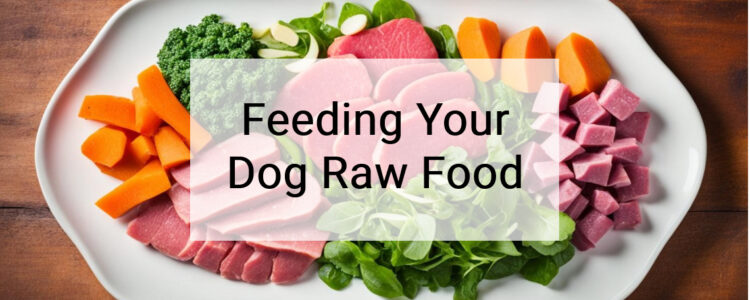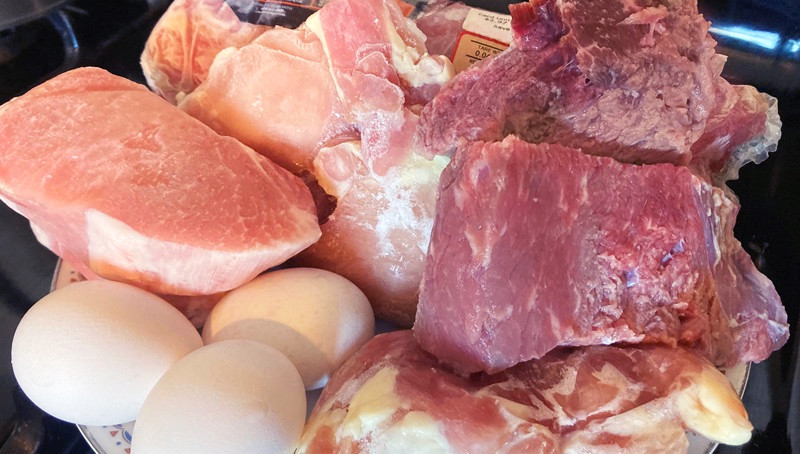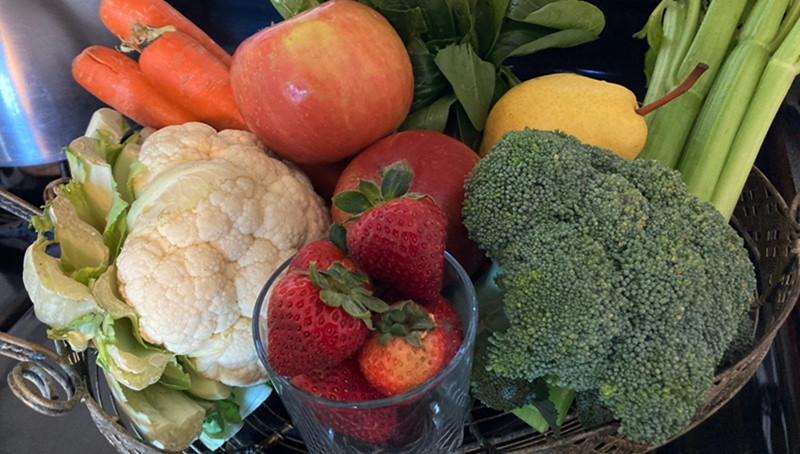
You love your dog, right? And you probably want to feed him the best food.
Looking at his teeth you can see he's a carnivore with teeth made to rip chunks of meat. That's very different from horse teeth that are meant to grind their food. So why feed kibble that needs more grinding than ripping?
Read on to learn more about feeding raw food.
What is a raw food diet for dogs?
This diet for dogs includes meat, organs, raw bones, and fresh produce. These foods are not cooked and don't have any additives or preservatives. The idea is to provide a more biologically appropriate diet than dry dog food.
Why should I feed my dog raw food?
For thousands of years dogs and their ancestors hunted and ate the meat raw. When they first joined our households, they ate scraps.
Now many dogs eat commercial food which is usually kibble or canned. Those foods are often cooked which destroys some nutrients. Pet food manufacturers try to add back what was destroyed, but synthetic isn't always as good as natural ingredients.
As an example, cats developed health problems and died when fed commercial food. Although taurine is abundant in raw meat, they didn't know it was essential until recently.
It’s only in the last 80 years or so that people started feeding dogs commercial foods. It's not a coincidence that dogs started developing cancer, heart disease, and allergies just like people who eat processed foods.
What are the health benefits of raw food for dogs?
Feeding raw food helps with digestion and skin health, making it a top choice for dog owners.
Raw meat is easier for dogs to digest which means better nutrient absorption and less waste. You'll notice firmer poop and fewer tummy troubles.
A raw diet is full of fatty acids and other nutrients that make skin and fur healthy.
There aren't harmful additives such as BHA that's often added to store-bought dog food.
| Benefits of Feeding Raw Food | Potential Drawbacks of Raw Feeding |
|---|---|
| Closer to a dog's natural diet | Requires a bit more thought and effort than pouring kibble in a bowl |
| Nutrient-dense so he needs less and there's less you-know-what to pick up in your yard | Handling raw meat comes with safety considerations |
| Feeding a variety of meat sources can lead to fewer allergies | Potential for unbalanced nutritional intake |
| Healthier skin and coat | Preparation time and storage requirements |
Is a raw food diet complete and balanced?
If you give your dog a variety of raw, meaty bones ("RMB") you will have a balance over time. Except for the raw part, that's pretty much how we eat.
Because chicken is widely available and fairly inexpensive, many people feed mostly chicken. However you should feed as wide a variety of foods as your dog will eat (and your wallet can handle).
For example:
- chicken backs, necks and quarters,
- rabbit parts,
- turkey necks,
- pork necks,
- beef ribs, heart, liver, tongue,
- eggs (whole, including the shell).
My friends have also given me goat, fish, deer, elk, and buffalo meat.
I have several Labs so I often buy in bulk at a restaurant supply business. Sometimes their stock varies, but I usually buy ground turkey, chicken quarters, and beef heart. That's about 60-80 pounds of meat.
When I have puppies I'll usually start them on gruel which is kibble soaked in about 50/50 goat's milk and water. Then they'll graduate to ground up chicken wings, and finally to intact wings. When you see them snatch the wings you'll realize how high they value raw food.
Again, if you feed anything with bones it must not be cooked.
And I also feed fruit and vegetables, but they're not a big part of my dogs' diet. For things they like - apples, avocado, carrots, celery (but not bananas, for some reason) - I chop into bite-size pieces. Other things like spinach and cauliflower get chopped up in the grinder and mixed with ground meat.
Won’t raw food make my dog sick?
Dogs and their ancestors ate a raw food diet for thousands of years. It's only after they started eating commercial dog food that health issues increased.
For example, in 2007, hundreds of pets died of kidney failure after eating kibble contaminated with melamine and cyanuric acid. Melamine is a compound used to make Formica, plastic dinnerware, insulation, cleaning products, and dry erase boards. The contamination was traced to companies in China that make animal feed. These companies reportedly added the chemicals to "give the false appearance of a higher level of protein."
Shouldn't I cook the meat?
No, and there are several reasons not to cook it. First, dogs evolved to eat raw meat. Second, cooking causes bones to become brittle and dangerous. Never feed cooked bones to your dog. Third, cooking will destroy enzymes and anti-oxidants essential to your dog’s health.
In the 1930s, Francis Pottenger M.D. did an experiment with cats. He fed one group of cats a raw food diet and a different group a cooked diet.
The cats eating the cooked diet developed problems such as tooth loss, deformities, behavioral problems, paralysis, heart lesions, and arthritis. Mother cats had more miscarriages and some died giving birth.
Fortunately when they were later fed a raw food diet, many were restored to health.

Can’t my dog choke on a bone?
Yes, dogs can (and have) choked on many things including bones, kibble, tennis balls, sticks, and socks. Dogs can also break their teeth on bones. Therefore you should feed raw bones of a manageable size, including poultry, rabbits, and non-weight bearing bones of larger animals.
Make sure the pieces are large enough so that your dog has to tear and chew rather than gulping. Gulping can cause choking. One of my dogs tried to swallow a chicken quarter whole. From then on he got to chew on the thigh while I held the end of the drumstick.
If you're worried about feeding bones you can still get some benefits of a raw food diet by feeding ground meat. Although that's fine for an occasional meal, your dog also needs the additional nutrients found in bones. You can add ground up bones or bone meal to balance nutrition. Check with your veterinarian for advice.
Another option is buying a raw diet, ground and specially prepared for dogs. You can find these in pet stores and some grocery stores. However there are two downsides: less knowledge about the ingredients and the cost.
Are there risks feeding raw meat?
Raw meat can carry harmful germs like salmonella or listeria. These could make your dog, you, and your family sick.
Try to buy meat from a butcher or high-quality supplier. Wash your hands and surfaces before and after handling raw meat.
Pork has a reputation that it must be cooked well-done because of a parasite that could be in the meat.
According to WebMD, "Eating raw or under-cooked pork can also result in trichinosis, an infection of parasitic roundworms called Trichinella. While trichinosis symptoms are usually mild, they can become serious — even fatal — especially in older adults."
However, according to the CDC, "... meat contaminated with the Trichinella larvae comes from meat-eating animals such as bear, wild boar, or walrus." (Note: I don't feed meat from meat-eating animals.) They go on to say it "is a rare disease in the United States, with only about 15 confirmed cases per year."
I do feed pork but I freeze it for 20 days at 5°F (-15°C) to kill any worms.
Can you give me some recipes?
Just give your dog a variety of raw, meaty bones as the main course. Chicken, beef, pork, and turkey are often easiest to find, but also look for rabbit, goat, and other species.
Add some heart or liver, plus a little boneless meat, and maybe some mashed up vegetables.
You can also add some eggs (including the raw shell), some fish (whole, if possible), and perhaps some yogurt (with active cultures).
When you're starting out, plan a week's worth of meals. If you feed twice a day choose nine meals of RMBs, two meals of muscle meat, and three veggie meals.
If you look in the 'fridge and there are only packages of muscle meat when you're supposed to be feeding an RMB, don't worry. Give an extra meal of RMBs and relax. Your dog won't care. Just remember you're striving for balance over time.
By the way, you can make your own treats in addition to raw goodies. Check out these recipes for healthy dog cookies.

Transitioning to raw food
It's best to start simply: one type of RMB for the first week or two. Don't add any supplements or try different RMBs for awhile. It might take your dog a little time to adjust to this new food.
Some dogs do best on a cold turkey switch rather than half-kibble and half-raw, others may need to be eased into a raw food diet.
Keep it bland in the beginning. You might start with chicken or turkey and feed wings, necks or backs for the first few days. Some dogs may take a little while to adjust, and you may see some diarrhea. If so, you can try adding some canned pumpkin (not the pie filling) or increase the percentage of bone.
You might see a little vomiting. Sometimes it's bits of bone that he couldn't digest, other times it's a yellow foam that means his stomach is empty. Raw meat usually digests faster than kibble, so you may need to feed more often.
Starting out, you might add some yogurt with active cultures or some digestive enzymes to help his digestive system. I use Dynamite's DynaPro. It's a pre- and probiotic and only takes a few drops to a small squirt. (Note: If you buy it after clicking on this link, I'll earn a small commission.)
As your dog adjusts, add another type of RMB (not just a different body part, but a different species). Feed just those two meats for several days or more until your dog seems comfortable with his new diet.
Then gradually try different foods. See what your dog likes. Some love fish, some hate it. Some love veggies, some won't touch it.
Wait to add richer foods like liver or heart until your dog is handling the basic raw diet.
How much should I feed my dog?
As a starting point dogs should eat about two to three percent of their ideal adult weight.
First you need to find out how much he weighs. Drop in at your vet's office if he's too big for your home scale. Then multiply by two percent and again by three percent. For a 70 pound Labrador, that would be about 1.5-2 pounds of food.
Depending his activity level and body score, you may need to adjust the amount you feed.
Puppies should also receive about 2 to 3 percent - not of their current weight - but of their ideal adult weight.
And don't worry about giving your dog the same exact amount every day. Just keep the amount close to the two to three percent of his weight. Bump it up a bit if he starts looking thin or cut back a little if he's getting pudgy.
Tips for switching to raw food
Switch slowly so your dog's stomach can get used to the new food.
How much food your dog needs depends on their size and health needs.
Be sure to talk to your vet about any problems your dog might have with raw food.
To supplement or not?
Feed a variety of raw meaty bones, some muscle meat, and a bit of organ meat and you probably won't need to supplement.
However commercially-raised animals might not be as nutritious as wild animal meat. To balance it out you can supplement with salmon or fish-body oils that contain high amounts of Omega-3.
By being careful you can give your dog the benefits of raw food. And I bet he'd love the change!
Now that you know what food to feed your dog, maybe you'd like to know what NOT to feed him.
NOTE: The information on this website is not intended to replace your veterinarian's advice. This information is intended to provide non-technical information in an easy-to-understand format. The website author accepts no responsibility or liability for how this information may be interpreted or construed, or any actions that might be taken as a result of the information herein.


